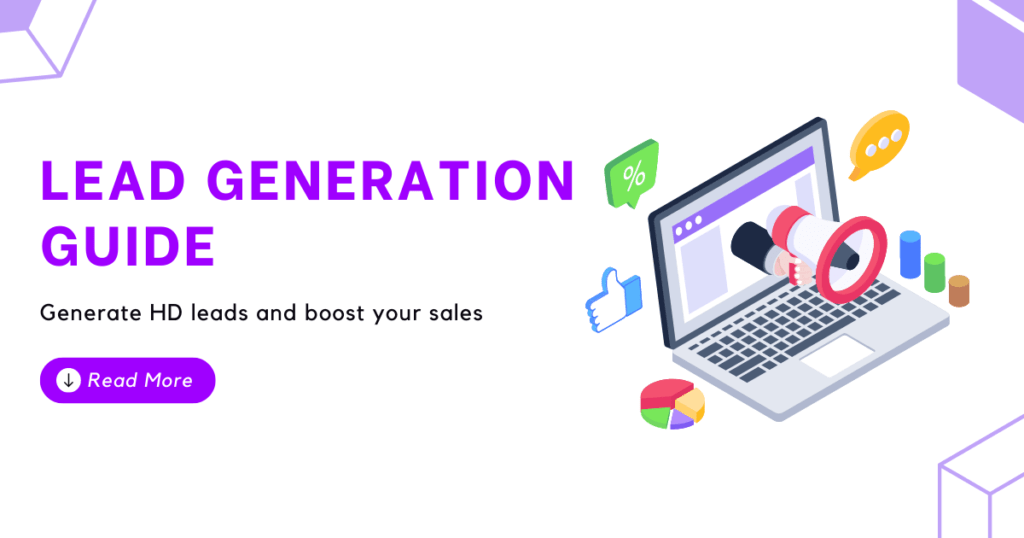
In this article, we’ll discuss everything about “How to generate Leads for Business”.
Lead Generation is vital for businesses because it can positively impact sales and growth.
In simple words, it is the process of attracting consumers and converting them into someone who has an interest in your company’s product or service.
Here, we’ve broken down each stage of creating a lead generation strategy into actionable steps that you can follow one at a time.
Whether you’re a complete beginner or an expert looking to tweak an existing marketing strategy, you’ll find clear explanations and actionable advice to help you generate more quality leads.
Table of Contents
HOW TO GENERATE LEADS FOR BUSINESS : 10x YOUR SALES
Ready to dive in?
Let’s get started …
What is a Lead?
The word is so popular in the world of digital marketing. Get Leads, Generate Leads, Convert Leads, This Lead, That Lead, and so on.
But what exactly is a “Lead”?
A Lead is someone who has expressed interest in a company’s product or service by sharing personal information (such as name, email address) with the company.
Leads usually contain 3 things:
- Name
- Email ID
- Phone Number
In some cases, the leads do not include names. In some instances, it is an email ID or a phone number.
You can use the email address or the phone number to contact your potential customers and tell them about your products and services.
Make sure you don’t confuse Leads with Customers. There’s a difference. A Lead is a potential customer who needs to be qualified to become an actual Customer. (This means they might want to work with your business in the future.)
What types of Leads are there?
You would need a lot of time if you got your sales team to contact all leads because some have a higher likelihood of buying than others. That’s why many companies categorize their leads. Each company defines these differently, but the most common are –
- Marketing Qualified Lead (MQL)
A marketing-qualified lead (MQL) is someone who has interacted with your marketing but is not yet ready to purchase. For example, they might have attended your webinar or downloaded a free eBook but not purchased anything.
- Sales Qualified Lead (SQL)
Sales-qualified leads (SQLs) are leads who have taken actions to indicate a desire to buy. For example, they might have signed up for a trial but not purchased anything. The sales team is typically in charge of handling SQLs in most companies.
- Product Qualified Lead (PQL)
The product-qualified leads are the ones that have used your product and taken actions that indicate they might purchase your product. PQLs usually exist when a company offers a free or limited trial of their product (such as BuzzSumo 30 Day Trial) along with the option to upgrade. As an example, a PQL is a customer who uses your free version but inquires about features that are only available upon paid version.
What is Lead Generation?
Lead Generation is the process to attract, engage, and capture the interest of people who might buy your product or service.
Some ways to generate leads are through job applications, blog posts, live events, and online content. These lead generators are just a few examples of lead generation strategies that you can use to attract potential customers and guide them towards your offers. (We’ll cover more strategies later in this article)
In other words, Lead Generation helps you warm up potential customers and get them on the path to purchase.
Why is Lead Generation important?
Lead generation is important for your business because it allows you to contact potential customers directly. Afterward, you are able to foster and develop your relationship with them until they are ready to buy from you.
Why to generate Leads? Why to avoid buying Leads?
It is much better to generate leads rather than buy them because generated leads have expressed an interest in your product or service and have allowed your contact, but purchased leads are not the same. Although they might be on a relevant list, the messages you send them are unwelcome, and they probably don’t know your brand or business.
Your brand may suffer reputation damage if you call and email bought leads.
How to generate Leads?
The Lead Generation process consists of three simple steps –
Step 1 – TRAFFIC
Step 2 – OFFER
Step 3 – CAPTURE
So let’s learn all these steps in more detail –
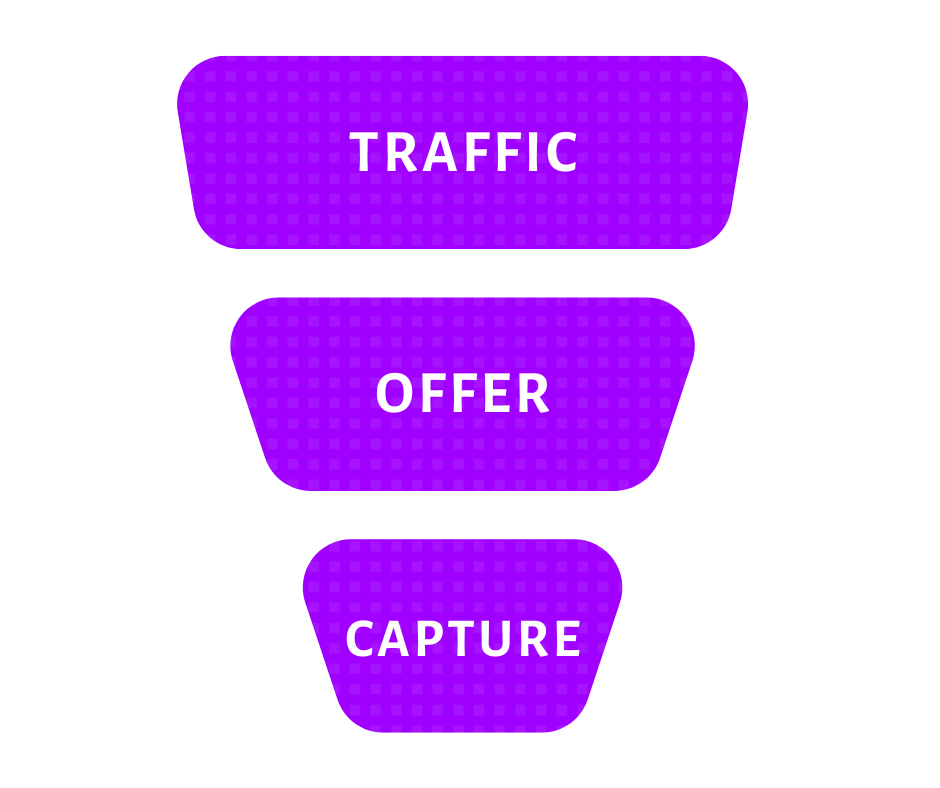
Step 1 – TRAFFIC
Traffic is the first and most important component of your Lead Generation campaign. Your website and offers will not appear on anyone’s radar. It needs to be marketed.
For example, let’s say you sell Sanitizer and you have a landing page offering a free 10ml sample bottle.
To drive traffic to your website, you could:
- Run Facebook Ads, Google Ads, Twitter Ads etc.
- Create content that ranks on Google.
- Share your website URL to your social media friends.
- Promote your website URL to communities, like Quora, Answer The Public.
This is just a sample of what you can accomplish. You have an endless array of options.
Step 2 – OFFER
A visitor to your site won’t share their contact information without a compelling reason. Therefore, you have to come up with an excellent reason and there are several ways to accomplish this. It depends on the niche you’re in and who you’re targeting. It’s also important to test multiple offers and see what resonates.
For example,
- Ecommerce stores offer discounts to attract visitors.
- Bloggers usually offer free eBooks or downloads
- Software-as-a-service (SaaS) companies are often known for creating free tools
Step 3 – CAPTURE
In order to capture a potential lead’s contact information, you’ll need a form. It is as easy as adding a form to your website.
You should ask for information based on your business’s needs. It’s common to ask for name, email, and phone number, although you can request anything you want.
Remember, when you ask for too much information, people are less likely to fill out the form. It’s not necessarily a negative thing since it usually means that the people making more effort are better candidates.
Lead Generation Strategies :-
Following are a few common ways to get more leads for your business. Each lead generation tactic follows the three-step process which we just discussed earlier.
1. PPC Advertising
PPC means paying for each click to your website. This is the quickest way of Lead Generation.
Step 1 – TRAFFIC
Advertise on a platform like Google or Facebook by paying them. Whenever someone clicks on your advertisement, you’ll be charged. Here you can also use their targeting options to ensure that your ad is showing to the right people at the right time.
Facebook, for example, allows you to target ads based on age, gender, location, interests, and more.
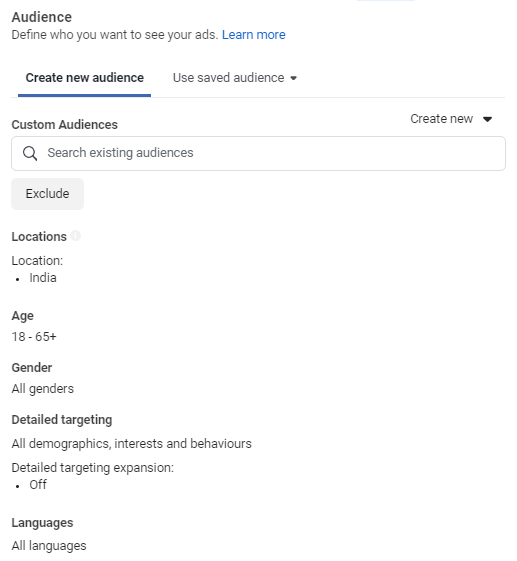
Step 2 – OFFER
Offer a compelling reason for people to click on your ad. A few examples are webinars, free trials, and free downloads.
Step 3 – CAPTURE
Promote your offer on a landing page with more details. Create a form for capturing leads.
2. Blogging
Blogging is a primary lead generation tactic for many companies. It’s the cornerstone of inbound marketing.
Step 1 – TRAFFIC
If you want to see traffic month after month from your posts, you’ll have to rank them high on Google SERP. In order to accomplish this, you should target topics people are actively searching for.
You can find these topics from the Uber Suggest Keyword Research tool :
- Enter your main keyword
- Select your Location
- Click on ‘Search’
- Click on ‘Questions’ tab
- Discover high-volume questions your target market has likely been searching for
For example, if you sell sanitizer online, “what happens if sanitizer goes in eyes” is probably a good topic for a blog post:
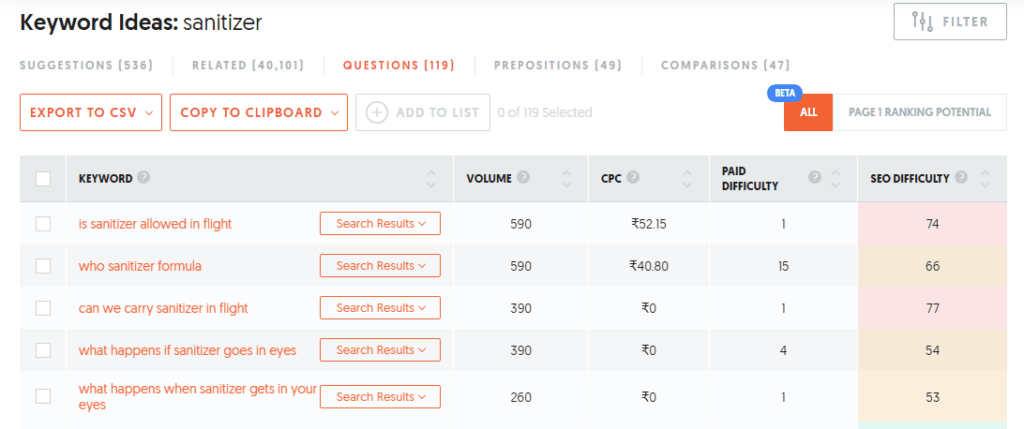
Step 2 – OFFER
You can offer readers bonus content in the form of free downloads in relation to the topic. For example, checklists, PDFs, worksheets, templates, and free courses are some of the best ideas.
Step 3 – CAPTURE
Create a lead capture form and attach it to your website. You can do this with a popup or link to a landing page.
Whichever method you prefer is up to you. Test both methods to see which works best for your business.
3. Guest Blogging
The term “Guest Blogging” refers to writing articles for another website.
You might wonder why you should publish your article on an external website rather than on your own website, the answer is simple: you can leverage a big site’s “authority” to rank for competitive and high-volume topics that would be hard for you to rank for on your own website. Then, by linking to a strong offer in the guest post, you can turn that traffic into leads.
To begin, find authoritative websites that you can write for. You should be able to handle this relatively easy if you’re familiar with your niche.
Your next step should be to find a topic that has search traffic potential. You can use Google Ads Keyword Planner or Buzzsumo to search for popular topics.
Next, find the email address of the editor and pitch them those topics. Make sure you mention in your pitch that similar sites rank for these topics, but they don’t. It will surely interest them.
4. Brand Collaboration
You want leads for your company. Other companies also want leads. What’s the harm in collaborating?
You can find a company in a similar industry with a good audience that isn’t a direct competitor here. Create something useful for their audiences, such as a webinar, eBook, or course. When they promote your offer to their audience, you’ll get traffic to your Website.
It doesn’t always have to be another company. You can also work with influencers. As long as they have the audience you want to reach, they could be a good match.
5. Turn Your Homepage into Lead Generation Interface
THE SSM ACADEMY homepage receives the most traffic out of all pages on our website.
It’s likely the same for you as well. It makes sense, because your homepage is linked to from every other page. Your homepage is the “face” of your website. There is a possibility some visitors who came from another page will click through to your homepage to check it out.
It may be a good idea to transform your homepage into a lead generation interface if you’re interested in generating more leads.
6. YouTube Marketing
Previously, we discussed written content such as Blogging and Guest Blogging. But we’ve yet to discuss another popular format that is Videos.
YouTube is the second most popular search engine on the planet. YouTube is watched for more than a billion hours a day. You can also leverage this platform to generate leads for your business.
Here’s how YouTube can generate leads for you:
- Target Topics With High Search Volume & Low Competition
When it comes to YouTube marketing, you should follow the same strategy you used for blogging and guest blogging – focus on topics that will generate both search traffic and business leads.
- Create a Video that deserves to Rank
Watch times are crucial to ranking on YouTube. You should produce a video that is entertaining, informative and captivates your viewers. It is recommended that you script your videos so that you can stay on topic. Then, edit them wisely for high engagement.
- Leads Capture
YouTube is generally not conducive to generating leads. However, that doesn’t mean it can’t be done.
First, add your landing page URL at the end of the video using YouTube’s end screen features.
Next, add it to your description.
Finally, pin a comment linking to your landing page.
7. Retargeting
You have used one of the above tactics. A certain number of leads were generated. However, not everyone who visited your website filled your form. You might think that’s the end of it – if they don’t sign up now, they are lost.
Nevertheless, that isn’t true. You can still try to get them back.
In what way?
Using Retargeting.
Retargeting is a form of online advertising that allows you to reach visitors who have visited your website.
In general, most advertising platforms (Facebook, Google, etc.) generate a JavaScript code (known as a pixel) that you can add to your website. Now if a visitor visits your site, the pixel will drop an anonymous cookie into their browser.
Afterward, the cookie allows your ad platform to show them your ad.
You can also send your visitors to different landing pages with different offers and see which performs the best.
Final Thoughts
All lead generation strategies work by following the same 3-step process: Traffic, Offer, Capture.
A major benefit of this process is that it allows you to quickly find and fix any gaps in the lead generation funnel.
If your landing page converts well but gets little traffic, you should focus on getting more traffic.
If your landing page has traffic but isn’t converting, change the offer or experiment with your lead capture mechanism.
Hopefully, you’ve learned a few actionable lead generation tactics that you can apply to your website.
It’s an ongoing process that requires continuous improvement.
So stay consistent and reach great success!
Is there anything we missed? Let us know in the comments section …

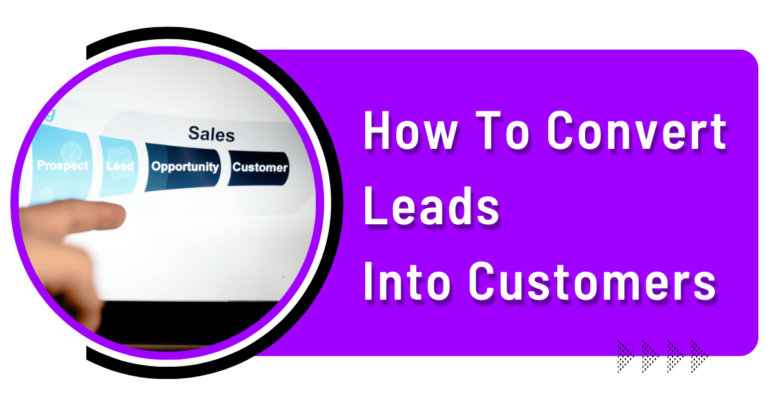
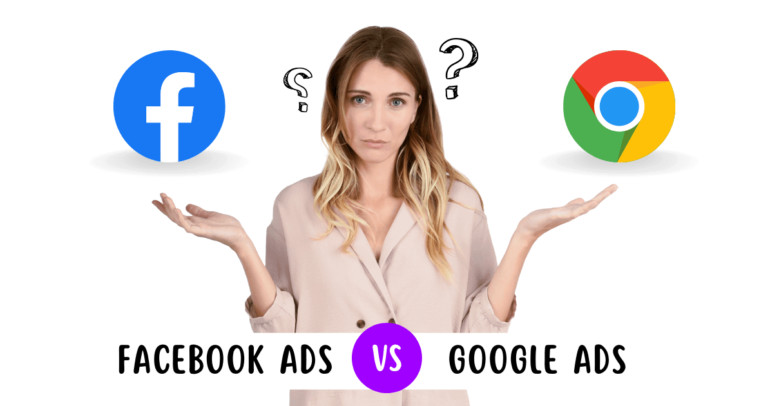


Social Media Management is one of the best way to generate leads, Social media is always one of the best platform to generate quality leads and increase more visibility of online pages (business pages) among potential visitors. You have described it well. Subscribed your blog.